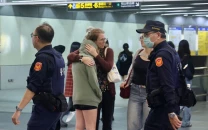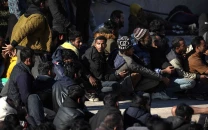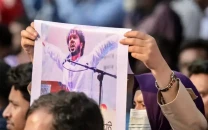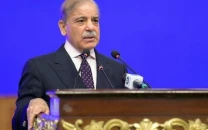London lab recreates horrors of war with 3D technology
Before Forensic Architecture, no surveillance groups had been able to "access" Syria's Saidnaya military prison

Debris from a bomb attack in a rebel-held neighbourhood of eastern Aleppo, northern Syria PHOTO: AFP
Human rights campaigners Amnesty International are the latest organisation to call on Forensic Architecture's (FA) expertise, creating the first navigable model of the jail as part of a drive to raise awareness about political prisoners in Syria.
Israeli activist and architect Eyal Weizman, 46, created FA in 2011, and it is now based in the leafy streets of south London, on the campus of host institution Goldsmiths, University of London.
Facebook Messenger now supports 3D Touch previews on iPhone 6S
Its interdisciplinary laboratory specialises in producing analysis and evidence to be used in human rights cases brought to international courts, with architecture a key tool in helping to accurately recreate events occurring in chaotic surroundings.
Before FA, no surveillance groups or journalists had been able to "access" the notorious prison, located 25 kilometres (15 miles) north of Damascus, used by the regime of Syrian leader Bashar al-Assad.
The laboratory pieced together testimonies given to Amnesty by former prisoners with satellite images found on the Google search engine and other publicly available online material.
"It's about unravelling the facts based on small details," explained architectural researcher Stefan Laxness.
"Picking up on the spatial details inadvertently mentioned by the detainees, using that to build up what they experienced helped us also understand how the prison might be structured, and we started to notice a pattern in the trajectory each detainee has throughout the building."
One detainee described how sunlight illuminated a certain part of his cell at a certain time of day, helping the team to verify his account.
"When he placed the cell in space with a certain orientation, and then you run a sun simulation... lo and behold their testimony actually corroborates with the physical parameters. In some sense that validates the interviewee and his story," Laxness said.
You can now watch 3D movies without wearing those annoying glasses
Researchers also travelled to Istanbul to interview "hearing witnesses" who were either blindfolded or not able to see directly other parts of the prison.
These former detainees did not have detailed visual information of the prison, but provided valuable evidence based on aural accounts of the rhythms of life inside, the routines of torturers and even mundane occurences such as water leaks.
Laxness said the former detainees were not necessarily familiar with 3D technology but "very quickly" understood how it worked and wanted to talk about their experiences and contribute to the model.
Other studies conducted by the agency include reconstruction the August 2014 bombing of Gaza, Guatemala's Ixil genocide of 1978-1984 and the 2011 sinking in the Mediterranean of a boat carrying 63 migrants from Libya.
FA is currently the only provider of such analysis, working with Human Rights Watch, international courts and the United Nations with key evidence.
The work combines traditional disciplines, such as mapping, ecology and law, with new technologies like 3D, as-well as the testimonies of victims and prominent witnesses.
But the changing nature of war is bringing other disciplines to the fore in untangling events.
You can now 3D-print pizza in less than four minutes
"Architecture provides a crucial look, vital to understanding contemporary conflicts," said Weizman, explaining that the migration of conflicts towards urban environments demanded a fresh approach.
"The city is a dense media environment," he added. "There are a lot of journalists and more and more citizens are filming what is happening around them.
"To understand and build a picture from all these sources, you need to build architectural models and place all these videos in space, to reconstruct the narrative of events," he said.



















COMMENTS
Comments are moderated and generally will be posted if they are on-topic and not abusive.
For more information, please see our Comments FAQ